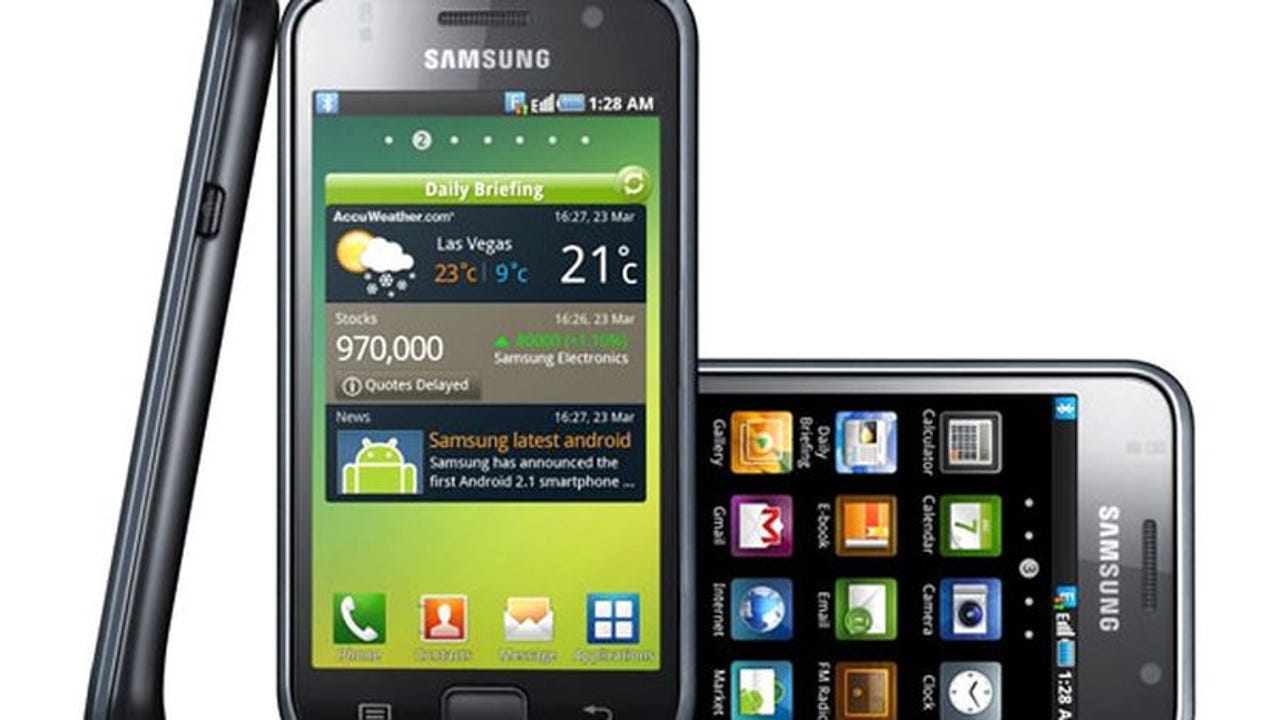Samsung Galaxy S to Galaxy S8: How the Android flagship smartphone has changed its look


Samsung Galaxy S
The Galaxy S range has become the de facto flagship smartphone brand not just for Samsung, but also for Android in general. Over the last seven years it has evolved from a plastic shell to a designer creation of curved glass and metal.
This is the handset that kicked it all off in 2010: the original Galaxy S, a 119g 3G smartphone with a 4-inch 800-by-480-pixel display and a 5-megapixel camera at the back. It ran Android 2.1 (Éclair). The 'S' stands for 'Super Smart' under Samsung's naming conventions.
Galaxy S II
The Samsung Galaxy S II arrived in 2011 with a slightly bigger 4.3-inch screen. At launch the S II ran Android 2.3 (Gingerbread) and CNET described it as "one of the most desirable phones running Google's Android operating system". It sported an 8-megapixel camera, which was also capable of shooting video at 1080p.
Samsung Galaxy S III
2012 saw the arrival of the Galaxy S III with another boost to the screen -- this time to a 4.8-inch, 720-by-1280-pixel (HD) Super AMOLED. Weighing in at 133g, the S III came with an 8-megapixel rear camera and a 1.9-megapixel front-facing camera.
Samsung Galaxy S III mini
Samsung also built a slightly smaller version of its 2012 flagship -- the S III mini, with a 4-inch screen and a more modest 5-megapixel rear camera.
Samsung Galaxy S4
The 2013 Galaxy S4 increased screen size again, to five inches and 1,920-by-1080-pixel (FHD) resolution (441ppi). Like the S III, the S4's display used Super AMOLED technology, which ZDNet described as "absolutely stunning...bright, clear, sharp and superbly readable."
The cameras saw upgrades, too: 13-megapixels at the rear, and 2-megapixels at the front. Both were capable of shooting 1080p video.
Galaxy S4 Active
The S4 Active is a ruggedised version of Samsung's 2013 flagship smartphone.
Samsung Galaxy S5
In 2014, the Galaxy S5 edged screen size up again, to 5.1 inches -- again with 1920 by 1080 resolution and a Super AMOLED panel. Another new addition was the 16-megapixel camera on the rear, accompanied by a heart rate sensor. The handset also saw the debut of the fingerprint reader in the home button for unlocking the phone or making in-app payments. At launch the S5 ran Android 4.4 (KitKat).
Samsung Galaxy S6
2015's Galaxy S6 added with one hand and took away with the other. The 138g device had a 5.1-inch Quad HD display with 1,440-by-2,560-pixel resolution (577ppi), plus a 16-megapixel rear camera and a 5-megapixel front camera. It supported wireless charging and ran Android 5.0 (Lollipop).
However, the S6 also featured a smaller, non-removable, battery than the previous model, wasn't waterproofed, and did not support external storage expansion via a MicroSD card. On the plus side, switching from a plastic design to metal and glass showed Samsung's desire to take the Galaxy S range upmarket.
Samsung Galaxy S6 Edge
Another departure for Samsung was the introduction of a smartphone with a curved screen that wrapped around the edge of the fascia -- the S6 Edge. Later in 2015, the company also introduced the larger 5.7-inch S6 Edge+.
Samsung Galaxy S7
With the Galaxy S7, water resistance and expandable storage both made a return, although the battery remained non-removable. Like its predecessor, the 2016 flagship features a 5.1-inch, 1,440-by-2,560-pixel Super AMOLED display. It ran Android 6 (Marshmallow) at launch and weighs 152g -- 34g more than the original Galaxy S.
Samsung Galaxy S7 Edge
With 2016's S7 generation, the 'Edge' version featuring a more glamorous wraparound screen is a 5.5-inch model.
Samsung Galaxy S8
Is this the next addition to the Galaxy S family? This leaked image claims to show the new Galaxy S8, which is expected to be unveiled next week. The Galaxy S8 is rumoured to have a dual-curved display with ultra-high definition 4K resolution, a revamped home button, a dedicated Bixby AI button, and iris scanning.